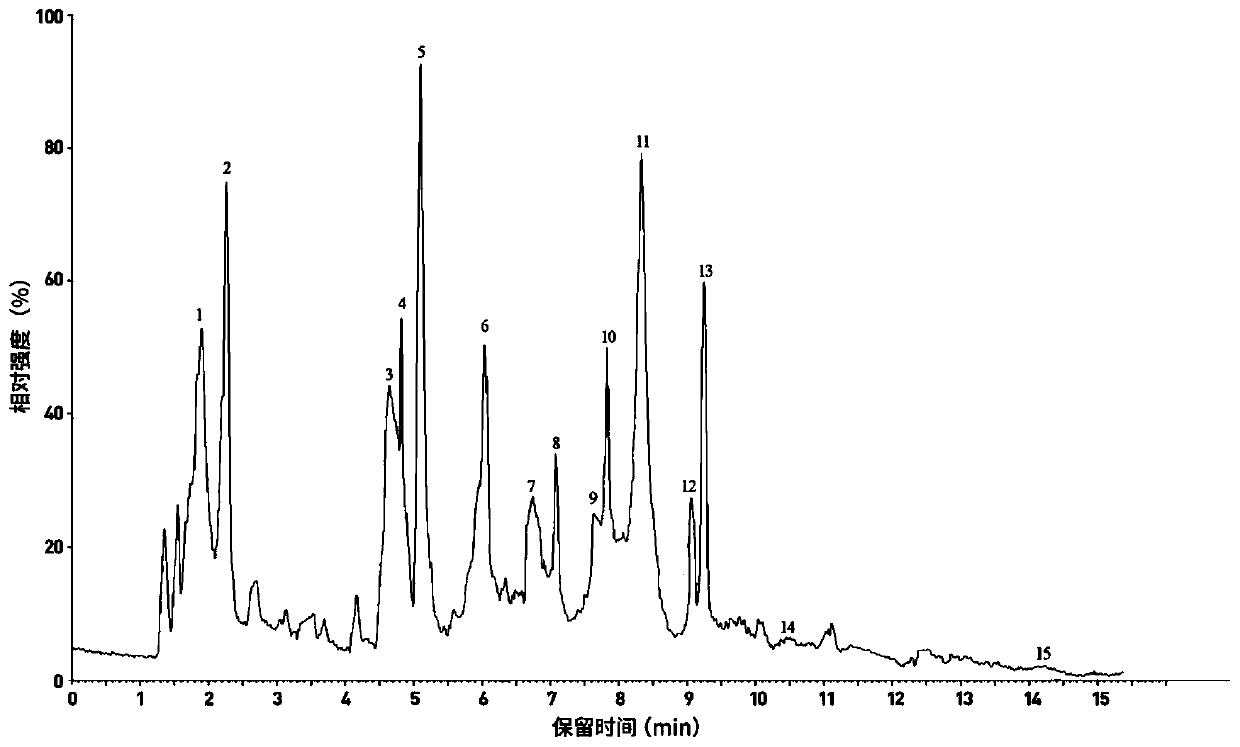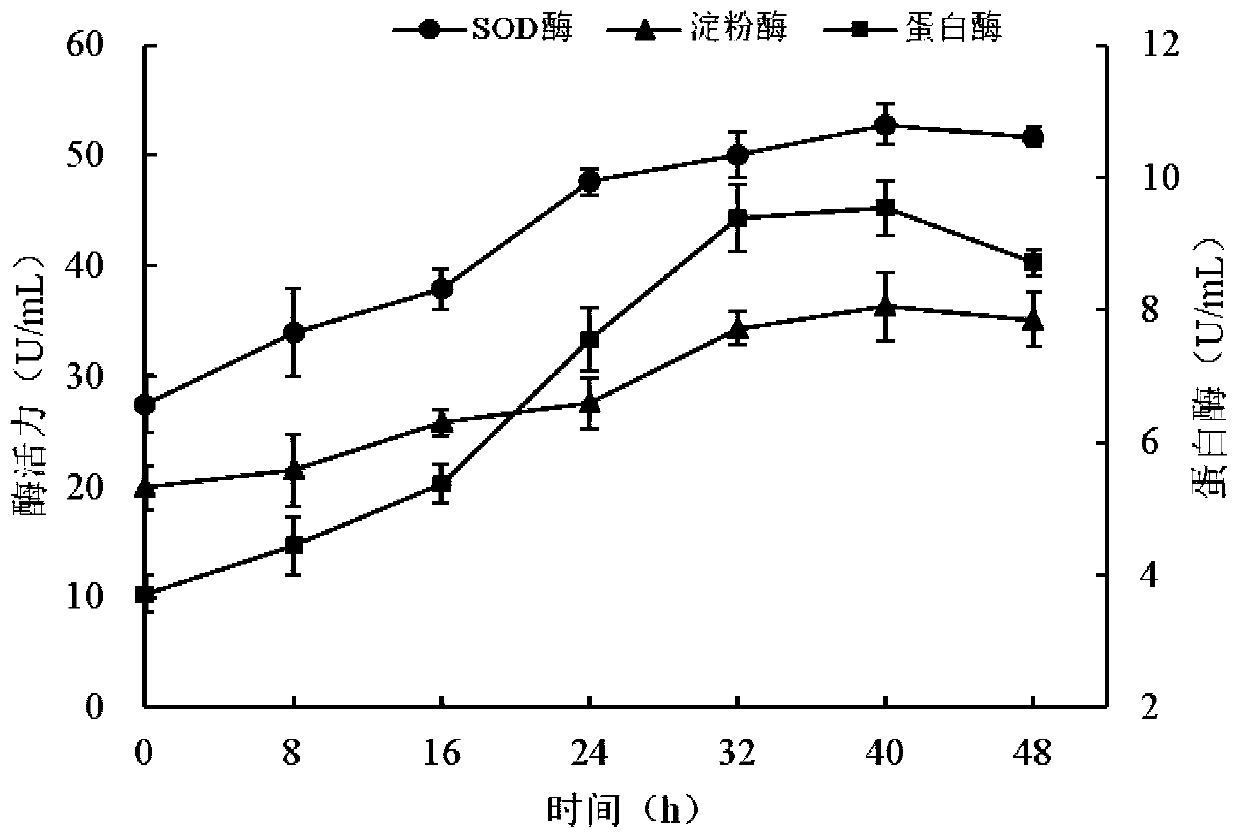Probiotic fermented rose residue product and preparation thereof
A technology of rose dregs and probiotics, applied in the field of food processing, can solve problems such as few reports on applied research
- Summary
- Abstract
- Description
- Claims
- Application Information
AI Technical Summary
Problems solved by technology
Method used
Image
Examples
Embodiment 1
[0049] Embodiment 1 A kind of probiotic compound fermentation rose residue product
[0050] The present invention provides a probiotic compound fermented rose residue product, the preparation method of which is as follows:
[0051] (1) Preparation of rose dregs fermentation substrate: take the remaining rose dregs after essential oil extraction and dry them, pulverize them with a pulverizer and pass through a 100-mesh sieve to form a solution with a concentration of 1g / L, and mix them thoroughly. Sterilize at 121°C for 15 minutes to prepare rose residue fermentation substrate;
[0052] (2) Composite fermentation: insert 1% (V:V) Lactobacillus plantarum fermentation broth and 1% (V:V) Bacillus natto fermentation broth into the rose dregs fermentation substrate, 38°C, 110rpm, Fermentation 40h;
[0053] The preparation method of the Lactobacillus plantarum fermentation liquid is as follows: After the Lactobacillus plantarum is activated, it is cultured at 37° C. for 14 hours in...
Embodiment 2
[0073] Embodiment 2 A kind of probiotic compound fermentation rose residue product
[0074] The present invention provides a probiotic compound fermented rose residue product, the preparation method of which is as follows:
[0075] (1) Preparation of rose dregs fermentation substrate: take the remaining rose dregs after essential oil extraction and dry them, crush them with a pulverizer and pass through a 100-mesh sieve, configure a solution with a concentration of 0.8g / L, and mix them thoroughly , sterilized at 121°C for 15 minutes to prepare the rose residue fermentation substrate;
[0076] (2) Composite fermentation: insert 0.5% (V:V) Lactobacillus plantarum fermentation broth and 0.5% (V:V) Bacillus natto fermentation broth into the rose residue fermentation substrate, 35°C, 100rpm, Ferment for 35 hours;
[0077] The preparation method of the Lactobacillus plantarum fermentation liquid is as follows: After the Lactobacillus plantarum is activated, it is cultured at 37° C...
Embodiment 3
[0082] Embodiment 3 A kind of probiotic compound fermentation rose residue product
[0083] The present invention provides a probiotic compound fermented rose residue product, the preparation method of which is as follows:
[0084] (1) Preparation of rose dregs fermentation substrate: take the remaining rose dregs after essential oil extraction and dry them, use a pulverizer to crush them, pass through a 100-mesh sieve, prepare a solution with a concentration of 1.2g / L, and mix them thoroughly , sterilized at 121°C for 15 minutes to prepare the rose residue fermentation substrate;
[0085] (2) Composite fermentation: insert 2% (V:V) Lactobacillus plantarum fermentation broth and 2% (V:V) Bacillus natto fermentation broth into the rose dregs fermentation substrate, 40°C, 150rpm, Ferment for 45h;
[0086] The preparation method of the Lactobacillus plantarum fermentation liquid is as follows: After the Lactobacillus plantarum is activated, it is cultured at 37° C. for 16 hours i...
PUM
 Login to View More
Login to View More Abstract
Description
Claims
Application Information
 Login to View More
Login to View More - R&D
- Intellectual Property
- Life Sciences
- Materials
- Tech Scout
- Unparalleled Data Quality
- Higher Quality Content
- 60% Fewer Hallucinations
Browse by: Latest US Patents, China's latest patents, Technical Efficacy Thesaurus, Application Domain, Technology Topic, Popular Technical Reports.
© 2025 PatSnap. All rights reserved.Legal|Privacy policy|Modern Slavery Act Transparency Statement|Sitemap|About US| Contact US: help@patsnap.com



